
You are likely to be familiar with two or three different types of Roses sold by most florists, most of which are usually distinguished by color. There is the ever-popular red rose, and then there are pink roses, white roses, and yellow roses. Roses are a great flower to grow yourself not only because of their bright colors but also because of their longevity and their many different uses. If you’re intending to add some roses to your own garden, keep in mind that there are over 360 different species under the genus Rosa. Many debates have been had to determine what species fall under the category of pure rose, and over the past few centuries, numerous hybrid roses have been bred that are ideal for every garden. These are 18 beautiful different types of garden roses that will have your backyard bursting with vibrant colors.
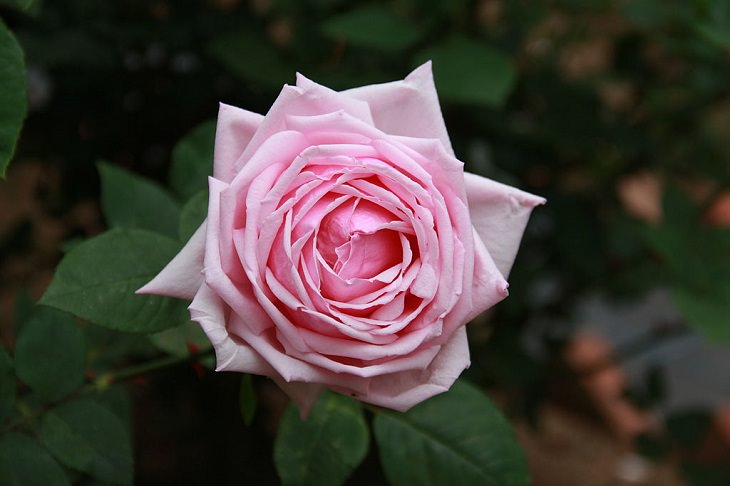
(By Arashiyama, Wikimedia Commons)
The Rosa La France is widely accepted as one of the first hybrid tea roses which is why it is considered as the original contributor to the birth of the modern rose. These plants grow vigorously, up to 4 feet on average and are best kept in warm and dry climates or in glasshouses as their foliage is extremely susceptible to fungi.
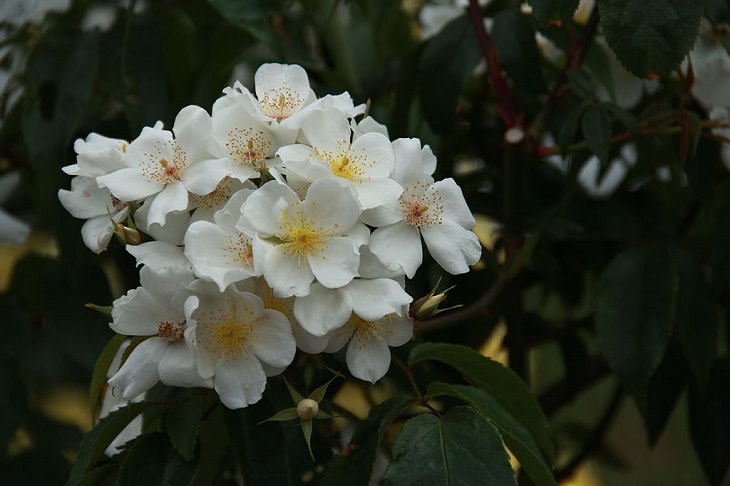
(By Arashiyama, Wikimedia Commons)
This rose grows on large shrubs in bundles and is known for its musky scent. Though this rose can be found in gardens, it has been hypothesized that there are no or very few wild musk roses still left, as this rose has been used for the cultivation of other hybrid and garden roses. It has an unusually long blooming season.
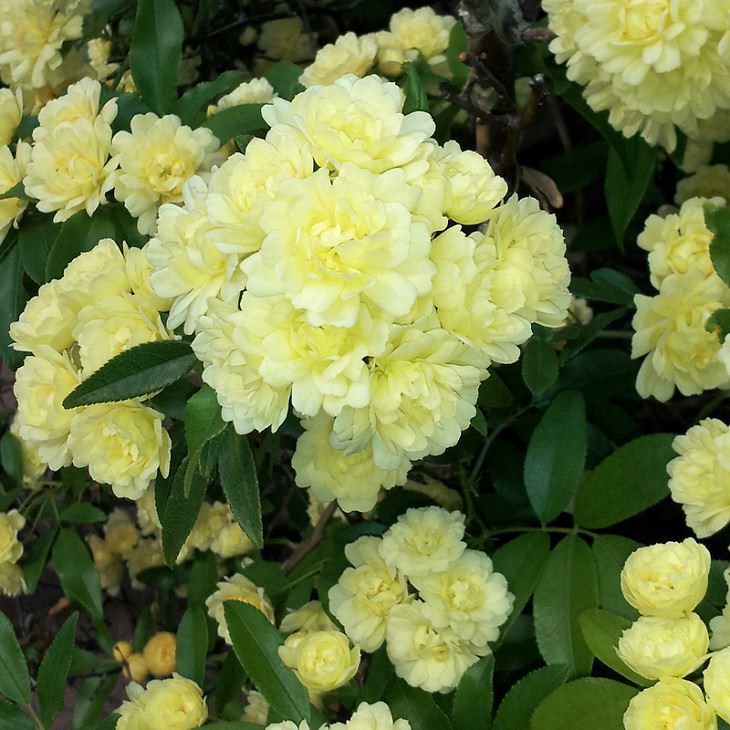
(By Jarekk, Wikimedia Commons)
The Lady Banks rose is a flowering plant native to China. This shrubby vine can grow up to lengths of 20 feet. The flowers that bloom are usually small and essentially thornless, which is a rare quality in roses. It has a fragrant reminiscent of violets and flowers better in warmer climates.
Related Article: 10 Health Benefits of Rose Oil
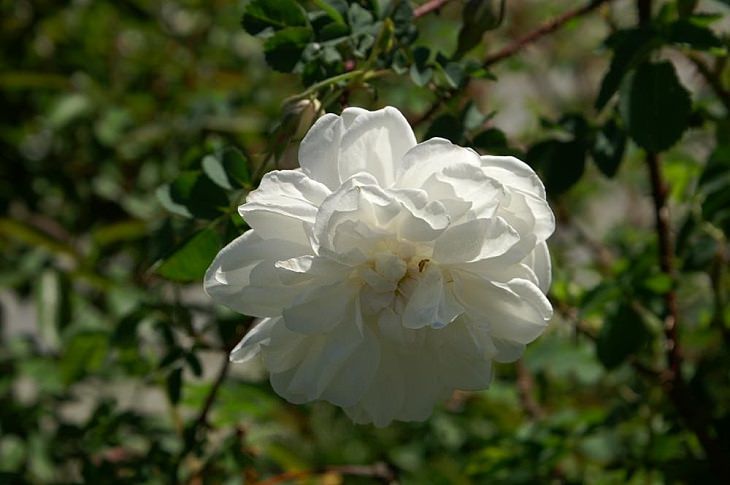
(By David J. Stang, Wikimedia Commons)
This species of rose has been found spread across Europe and Northwest Africa. They grow best on limestone pavements and in sand dunes, or in coastal areas. The plants of this species grow up to 6 feet, with prickly stems and bristles, and scarlet leaves which turn to maroon as the plant reaches maturity.
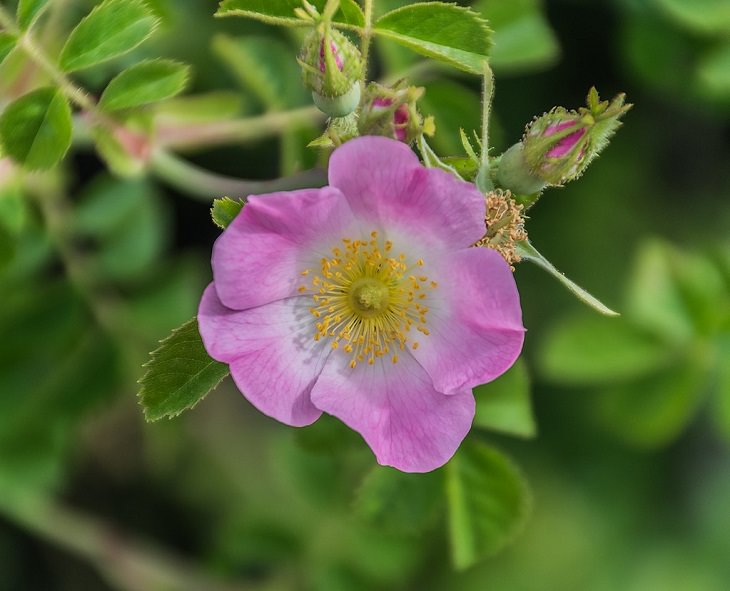
(By Krzysztof Golik, Wikimedia Commons)
This deciduous shrub grows between 6 and 9 feet and was originally found in Western Asia and Europe. The stem of the flowers have numerous hooded thorns, and the leaflets tend to have glandular hairs. Blooming season is typically from late spring to mid-summer and the plant and flower both tend to give off an apple-like fragrance.

(By David J. Stang, Wikimedia Commons)
From the foothills of the Caucasus Mountains, found in the Republic of Georgia, is this yellow species of rose. Yellow roses were not previously native to Europe and this particular species was introduced from Persia to contribute to the cultivation of roses. This bushy flower gives off a smell similar to that of flaxseed oil, though the pungency is believed to have reduced drastically over years of cultivation.
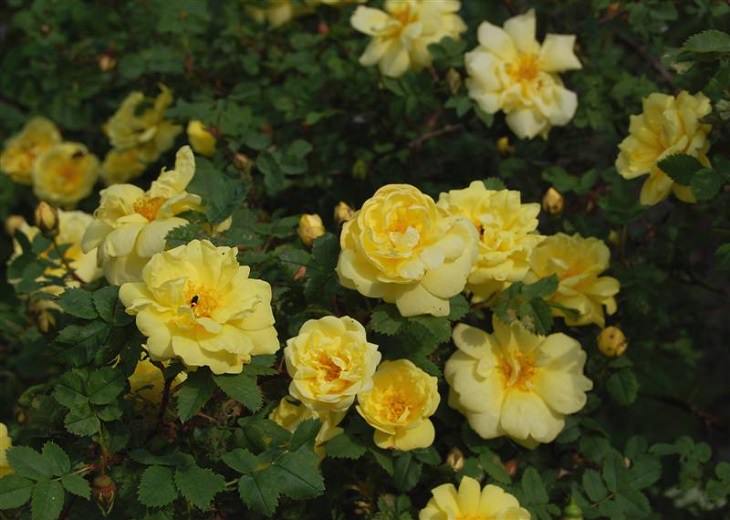
(By Helena Borg, Wikimedia Commons)
This lovely yellow rose is a hybrid, believed to be bred from Rosa foetida and Rosa pimpinellifolia (No’s 6 and 4 respectively on this list). Growing on bushy shrubs between 3 and 6 feet in length, the stems and leaves of this flower have numerous prickles. This cultivar is especially popular as suckers formed on the roots allow this plant to survive poor soil, droughts, and cold winters.
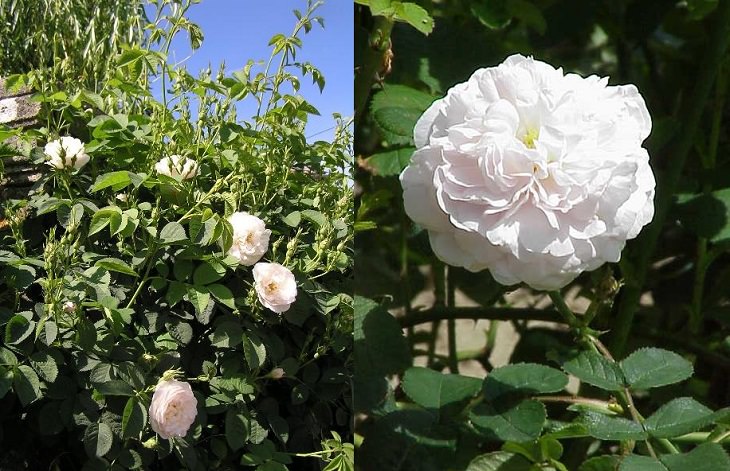
(By rosier, Wikimedia Commons - Right, Wikimedia Commons - Left)
A hybrid rose of unknown lineage, the White Rose of York has been cultivated across the European continent since ancient times. These sweet-scented flowers typically bloom mid-summer and are especially popular for gardens as they are highly disease-resistant and cold hardy. These tall shrubs can also withstand heavy shade, and some new variants can even survive in sub-arctic climates.

(By Nadiatalent, Wikimedia Commons)
Maiden’s Blush is another winter hardy and beautifully fragrant hybrid of Rosa Alba, cultivated since the 13th century. It grows on tall shrubs with over-arching bushes and blooms solely in spring. It is strong enough to act as a climbing plant and is highly tolerant of shade, making it ideal to grow beside walls. The leaves and stem of the flowers have a relatively low number of thorns and prickles.
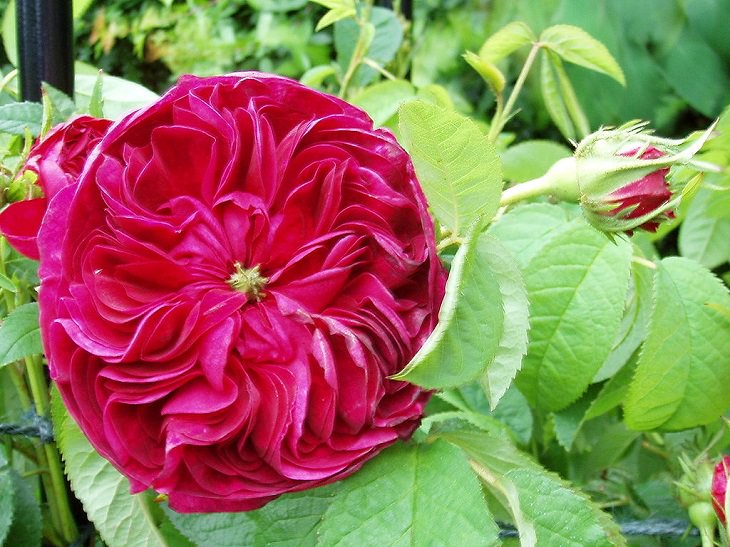
(By Amanda Slater, Wikimedia Commons)
The Charles De Mills rose can be traced back to the start of the 19th century. It is an ideal garden plant, with gorgeous full plants with overlapping petals and a sturdy plant that is highly disease resistant and can withstand both cold and shade. The flowers bloom in late spring.
11. Rosa Gallica Officinalis, “Red Rose of Lancaster”
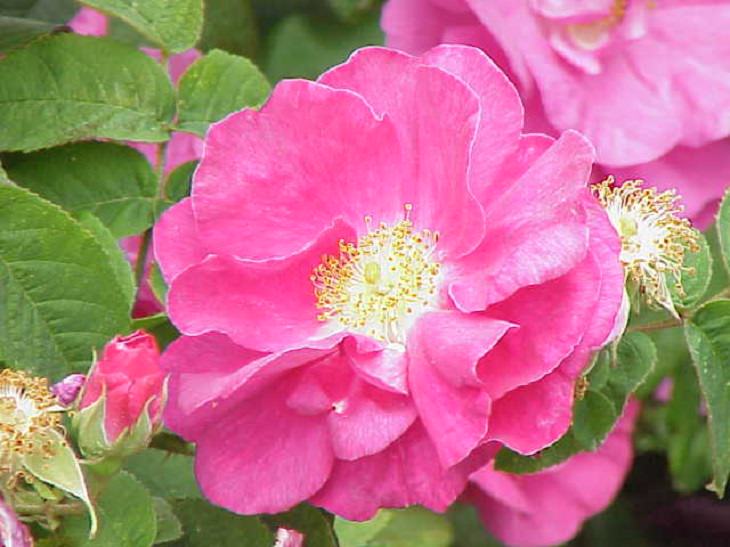
(By Kurt Stüber, Wikimedia Commons)
The Red Rose of Lancaster is the official flower of the ceremonial county Lancashire. Known for its sweet fragrance as well as health benefits, it has historically been used to make perfumes and medical remedies. This hybrid rose can survive both extreme hot and cold weather with well-drained soil and is easily maintained.
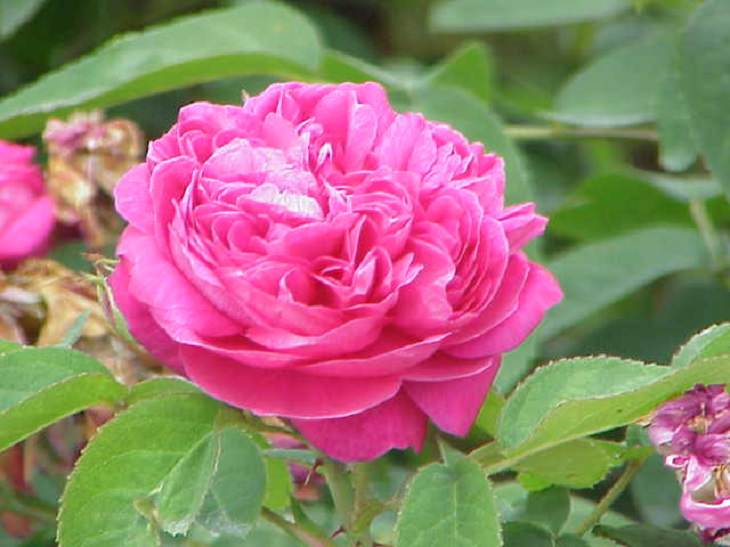
(By Kurt Stüber, Wikimedia Commons)
These fragrant flowers are a hybrid of Rosa moschata and Rosa gallica (No. 2 and 11 respectively on this list). This 13th-century garden flower has short curved thorns on the stems and leaves. The petals are edible and can be used for flavoring food and preserving sugar. It is also used to make rose oil for perfumes, rose water, and even rose concrete.
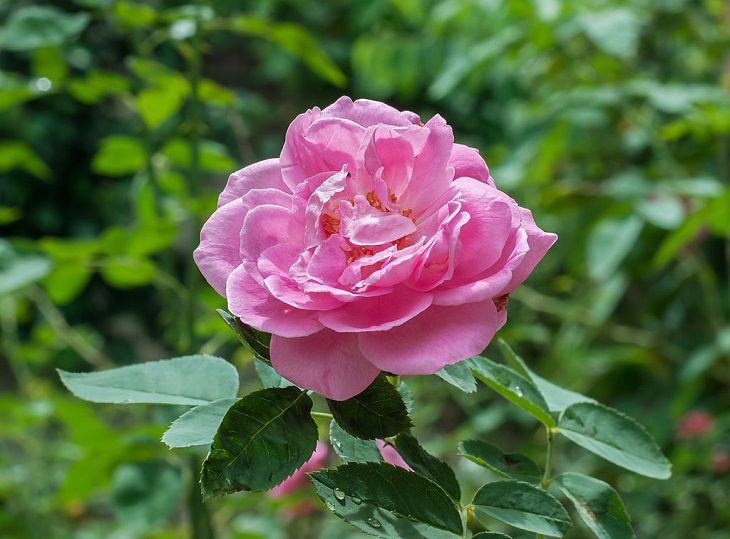
(By Joydeep, Wikimedia Commons)
Between the 17th and 19th centuries, using a complex formula of Rosa damascena (No. 12 on this list) and many others, Dutch rose breeders created this hybrid rose. This flower grows on shrubs that can extend up to 6 feet in length. It has a sweet honey-like scent and is popular in the creation of rose oils for perfumes. Naturally, it is most commonly grown in Grasse, a French town known for its perfumeries.
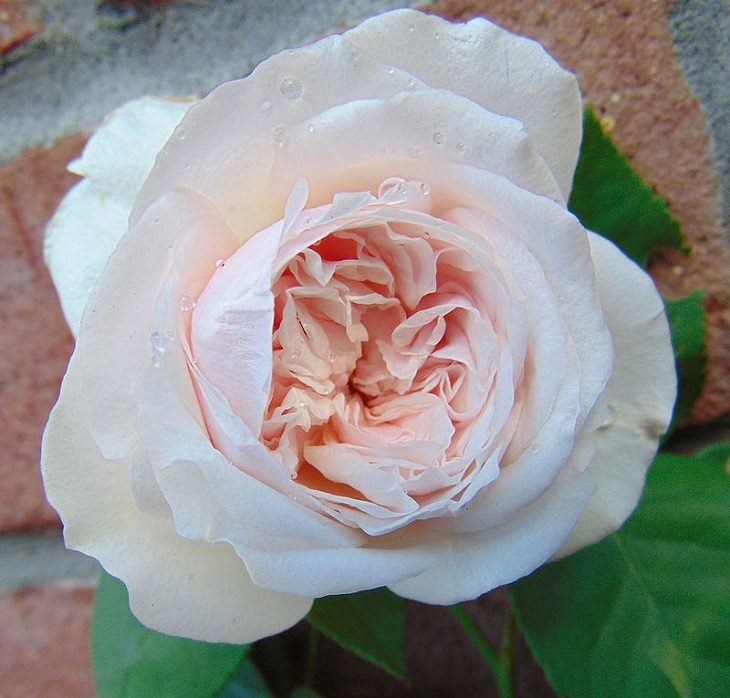
(By Nadiatalent, Wikimedia Commons)
This cultivar was created by a rose breeder from Lyon, France. It is a shrub that grows between 3 and 6 feet, low on thorns, and with bright green large leaves. It gives off a tea-rose fragrance and adds color and beauty to any setting. However, it does not adapt well to cold climates and tends to develop mildew during rainy seasons.
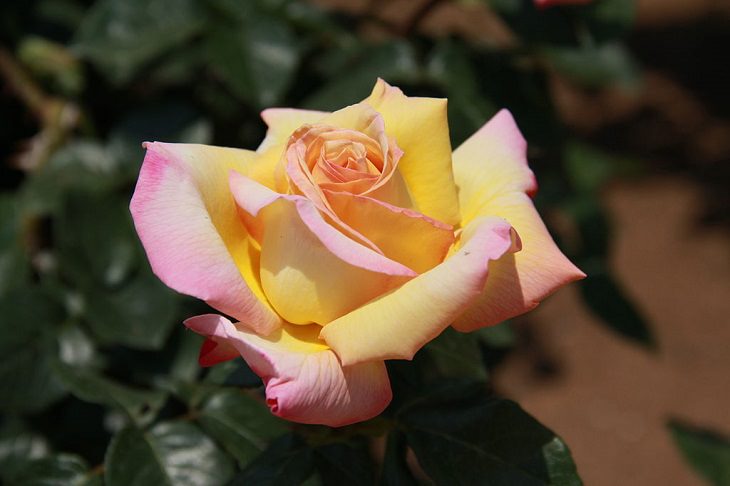
(By Roozitaa, Wikimedia Commons)
The peace rose is one of the most famous and successful hybrid tea roses, with over 100 million plants sold by the start of the 21st century. Its leaves have a leathery texture and grow up to 6 feet and 4 feet in length and width respectively. They are an excellent garden rose as they are disease resistant, cold resistant and semi-shade tolerant.
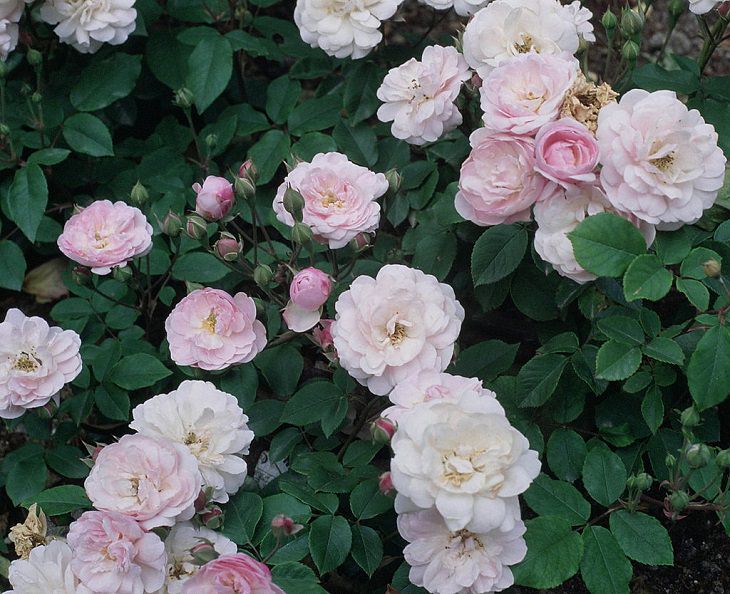
(By Cillas, Wikimedia Commons)
The Blush Noisette is among the first Noisette roses, cultivar plants introduced by Phillip Noisette to America in the early 19th century. It is one of the first climbing plants that also maintains cold-hardy qualities, as well as heat, disease, and semi-shade resistance. In warmer regions, the flowers bloom throughout the year.
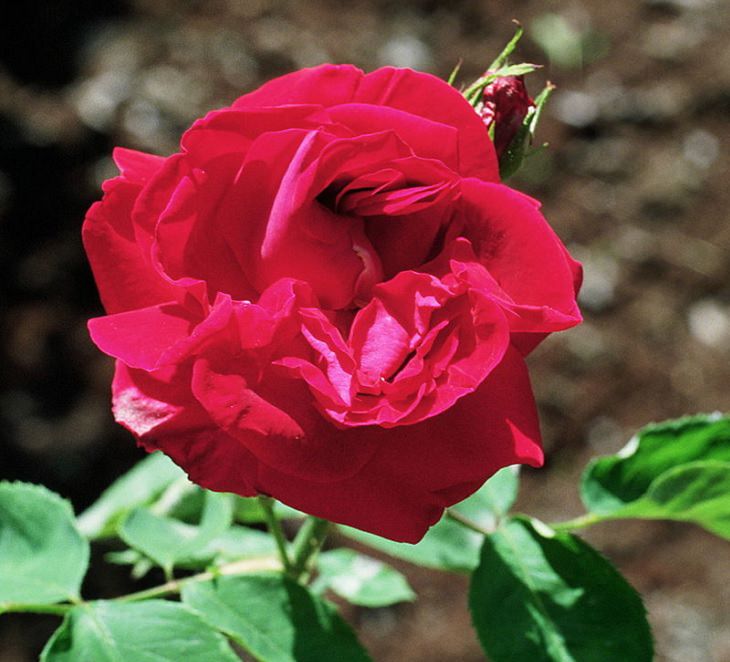
(By A. Barra, Wikimedia Commons)
This was among the earliest classic garden rose hybrids to be introduced. It was developed in the mid 18th century by a French amateur gardener. The plant has an even distribution of large double flowers with broad petals. It is a cold-hardy plant, with curved thorns, but is susceptible to mildew and rust toward the end of summer.
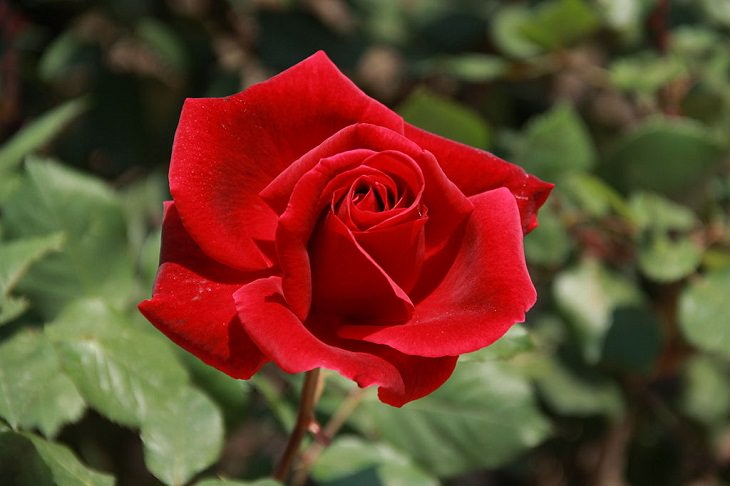
(By Roozitaa, Wikimedia Commons)
The Mr. Lincoln rose is a crimson hybrid tea rose introduced to the US in the 1960s that held the title of best-selling red rose in the country for many years. It was first grown in California and is a relatively drought-friendly plant. It can also handle certain cold climates and is a strong plant. However, it can be susceptible to blackspot.
Related Articles:
15 Colorful Flowers That'll Attract Butterflies to Your Garden